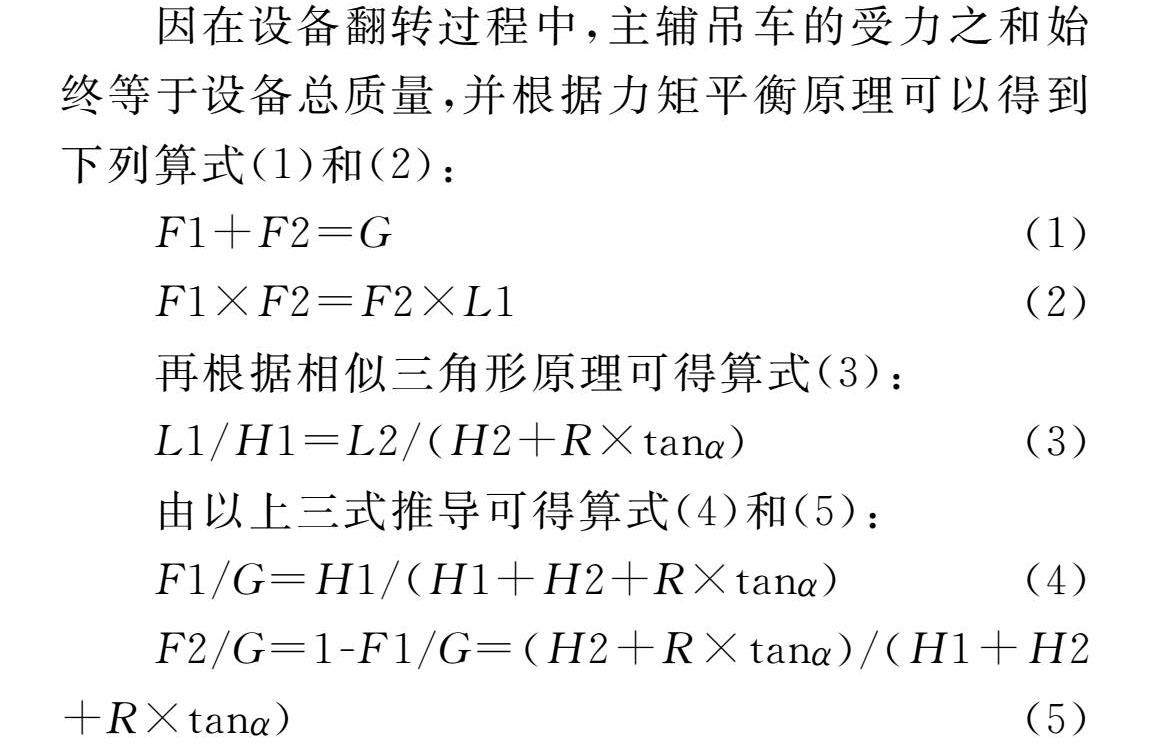立式设备吊装受力分析与控制要点


打开文本图片集
摘 要:立式设备吊装时的翻转过程是典型的双车抬吊作业,从实际的吊装过程中可知,其翻转过程对于主辅吊车通常都是变载荷作业。通过控制变量法和作图法,对立式设备吊装的翻转过程进行受力分析,并总结其变化规律,分别从设计、策划和实施三个方面提出了立式设备吊装时的重点注意事项,可供相关从业人员参考。
关键词:大件吊装;立式设备;受力分析
doi:10.3969/j.issn.1004-8901.2024.06.007
中图分类号:X050.7
文献标识码:B
文章编号:1004-8901(2024)06-0023-04
Force Analysis and Control Points of Vertical Equipment Hoisting
WANG Chao-jie
(Wuhuan Engineering Co., Ltd., Wuhan Hubei 430223, China)
Abstract:
The flipping process in vertical equipment lifting is a typical two-crane lifting operation. From the actual lifting process, it can be seen that the flipping process is usually a variable load operation for both the main and auxiliary cranes. Adopting the control variable method and drawing method, force analysis of the flipping process in vertical equipment lifting is carried out, and its rules of change are summarized. The key points for attention during vertical equipment lifting are put forward respectively from three aspects of design, planning and implementation, which can be of reference for related practitioners.
Keywords:
heavy lifting; vertical equipment; force analysis
doi:10.3969/j.issn.1004-8901.2024.06.007
立式设备的吊装通常是由单主吊车提升设备头部、单或多辅助吊车递送设备尾部,将设备由水平状态翻转为竖直状态,后再由主吊车将设备放置到基础上安装就位。(剩余4607字)